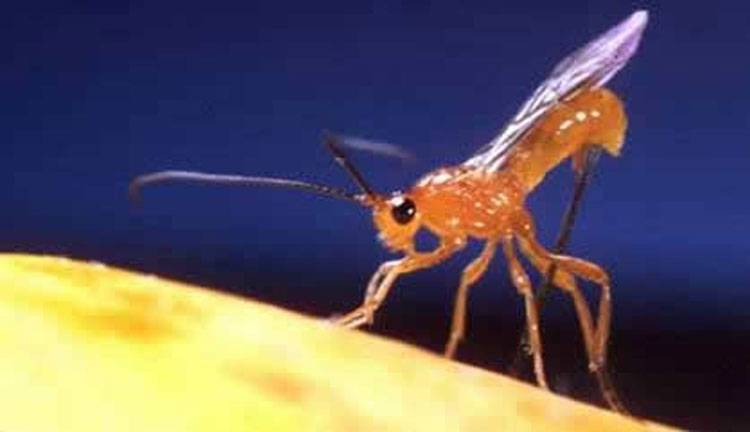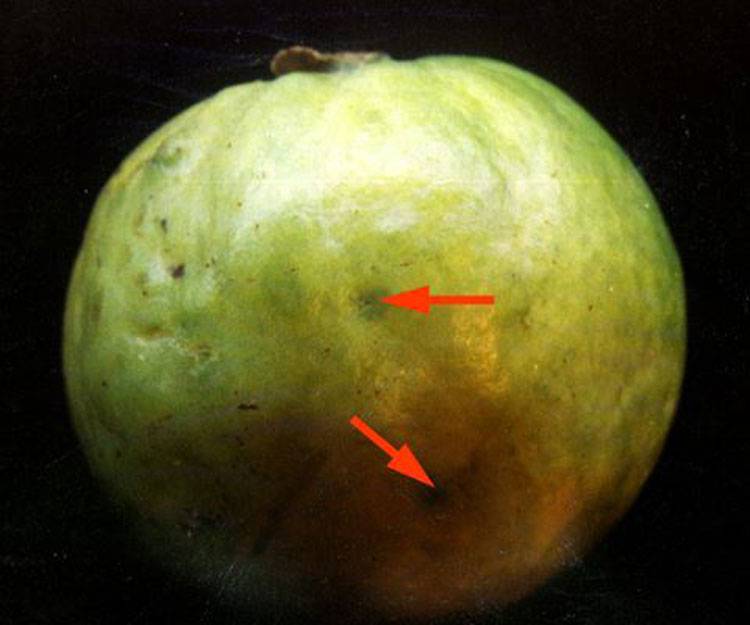Guava
Fruit Fly

Fruit Fly
Bactrocera diversus

Fruit Fly
Bactrocera diversus

Fruit Fly
Bactrocera diversus
Guava lovers and fruit growers alike often face a common and destructive pest—the Bactrocera diversus, commonly known as the guava fruit fly. Belonging to the Bactrocera genus of tephritid fruit flies, this tiny insect poses a significant threat to guava and other fruit crops. Its life cycle, though short, brings about devastating consequences for fruit quality and yield. Infestation leads to internal fruit damage, rendering the produce unfit for consumption or sale. Let’s take a closer look at the biology, damage symptoms, and control implications of this persistent pest.
1. Life Cycle and Damage
Female guava fruit flies lay their eggs beneath the skin of semi-ripe fruits. These eggs hatch into small white larvae (maggots), which immediately begin feeding on the soft fruit pulp. The damage is internal at first, often going unnoticed until the fruit begins to rot or drop prematurely.
Key Damage Signs:
-
Internal feeding causes fruit softening and rotting.
-
Infested fruits may appear distorted and may fall off the plant before ripening.
-
Maggots convert the pulp into a discolored, foul-smelling semi-liquid mass.
2. Host Range
Although guava is the primary host for Bactrocera diversus, the pest is not restricted to just one fruit.
Common Host Fruits:
-
Guava (primary host)
-
Tomato and other soft fruits (depending on the region)
The specific range of host fruits may vary based on local conditions and the presence of different fruit fly species.
3. Identification
Correct identification is crucial for timely management. The adult guava fruit fly and its larvae can be recognized by the following features:
Adult Characteristics:
-
Smoky brown or dark brown in color
-
Yellow markings on the body
-
Greenish-black thorax
-
Hyaline (clear) wings
-
Yellow legs
Infestation Symptoms:
-
Tiny dark punctures on fruit surface from egg-laying
-
Soft, discolored, or sunken areas on fruits
-
Maggots visible inside when cut open
-
Foul odor from rotting fruit
4. Elaboration of Damage Symptoms
-
Oviposition Punctures:
The first visible sign is the tiny punctures on fruit skin where eggs are deposited. These may appear as dark spots or small depressions. -
Fruit Softening and Rotting:
As larvae feed inside the fruit, the flesh softens, and the fruit begins to rot from within. -
Secondary Infections:
Damaged tissues are prone to attack by fungi and bacteria, which accelerate decay and spread further infections. -
Premature Fruit Drop:
Severely infested fruits drop early due to internal breakdown and weakening of the stem connection. -
Foul-Smelling Mass:
In advanced stages, the inside of the fruit turns into a discolored, slimy, and bad-smelling mass, making it completely unfit for any use.
The Bactrocera diversus fruit fly is a silent destroyer in guava orchards and mixed fruit farms. Timely identification and understanding of its lifecycle and damage symptoms are vital for integrated pest management (IPM). Farmers should monitor for early signs, implement traps, maintain orchard hygiene, and consider biological or low-toxicity chemical options where necessary. Staying vigilant is key to protecting valuable fruit crops from this persistent pest.
